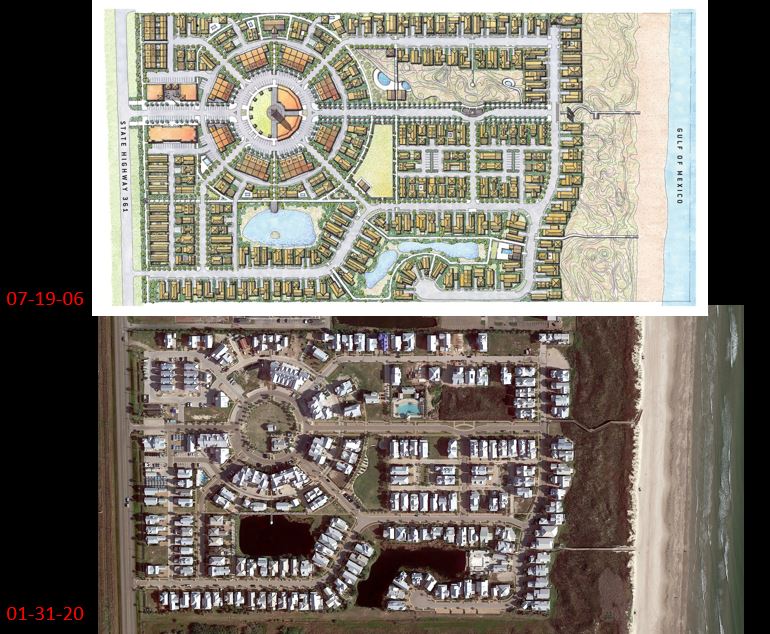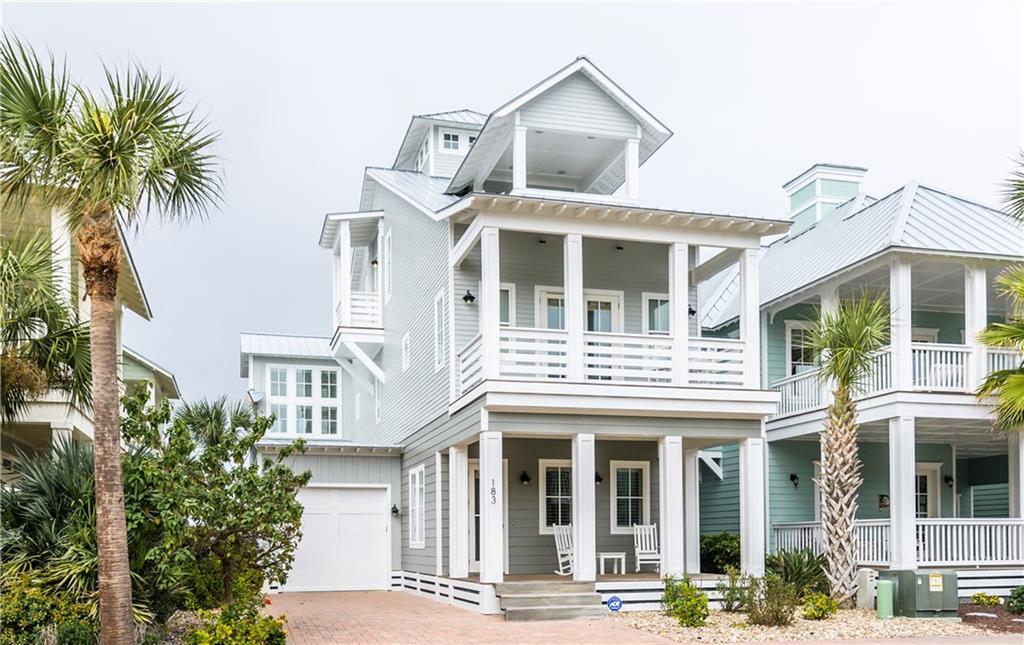Cracking the (Design) Code
The all-important design code gives Cinnamon Shore its identity, its foundation, and its promise of high standards for years to come.
Mark Schnell, the urban designer of Cinnamon Shore, lives near Seaside, Florida--famous in the world of architects, urban planners, and designers for its charming look and feel.The Truman Show was filmed there--a depiction of "the perfect town" for main character Truman to grow up in. Seaside developed in the 1980s and brought the concept of New Urbanism to the fore. It's a movement that seeks to bring walkable neighborhoods and towns back onto the American landscape--places where neighbors can stroll to the key areas of the community and where there's a timeless sense of place. It's all achieved through strict adherence to a design code.
Schnell brought New Urbanism to the Texas Coast when he was tapped to produce a master plan for Cinnamon Shore almost 20 years ago. Now the town has made good on the promises he drew on paper. Promises about walkability, character, and quality.

Cinnamon Shore has gone from a dream and a drawing on paper, as shown this image (top) from 2006, to a fully realized Gulf-side village, as seen in the 2020 aerial view (bottom). The reality deviates very little from the original plan.
How Design Codes Work
Managing Director Nigel Wakefield of Node, a British design firm, explains what a design code can do for communities:
"It introduces an increased level of design control in an attempt to exert greater assurance over the quality of the product. Development codes are a form of design guidance that prescribes the three dimensional components of a development and how they relate to one another."*
As he credits Seaside for reviving the notion of New Urban thinking and design code reliance, Wakefield says design codes mix "fixed and flexible" elements, allowing for custom homes and buildings within a framework that casts a certain vision and expectation. He lists all the things a code can do for a community:
- Ensure consistent quality;
- Provide points of reference for architects and developers;
- Give certainty to landowners, developers and architects regarding the requirements of delivering the approved master plan;
- Commercial deliverability,
Mark Schnell gave all those things in his master plan for Cinnamon Shore North, which is now almost completely built. Every site line, every pocket park, every paver sidewalk was planned to achieve the beach town's classic but fresh take on beachside living. And the plan for Cinnamon Shore South, located just one mile away, follows suit.

What is New Urbanism?
In the Design Code that Mark wrote for Cinnamon Shore, he defines this bedrock movement that underpins everything that happens at Cinnamon Shore:
"[New Urbanism] is the name of a movement to reform real estate development, government land use policies, and urban design that coalesced in the 1980s and 90s and continues to build momentum and devoted fans today. The movement is organized and promoted by the Congress for New Urbanism. Learn more at CNU.org."
What's Covered in the Cinnamon Shore Design Code?
The Design Code specifies practically every aspect of the community's look and feel, with sections on:
• Urban Standards
• Landscape Standards
• Architectural Standards
• Design Review Process
It defines the types of homes that can be built, from Gulf-front and Gulf-view to Cottages, Sideyard Homes, and more. And it details requirements for practically every element, including the towers that rise above rooflines on single-family dwellings. (They must have a total footprint of no more than 300 square feet and must have a maximum length of 16.5 feet, but inhabitable towers must adhere to the code's Building Height requirements for building types while uninhabital towers have no height restrictions.) The code is, shall we say, detailed. But it's the details where the magic happens.

The tower rule is just one example of how a design element is informed by the Design Code, but it also shows how the Code gives leeway for homeowners and architects to dream and create home plans together that become part of the "townscape" of Cinnamon Shore.
Other parts of the code prescribe the types of material that can be used for certain selections in a home. For instance, designers can choose a variety of material for porch ceilings, from beaded board to board-and-batten, but architects must share what they would like to use on the porch ceiling, mark it on the plan, and submit that choice for design review by Mark.
Other rules give the community a strong design consistency that guests and homeowners recognize, even if they can't articulate what creates it. They feel cohesion as they walk streets lined with homes that showcase a variety of porches, balconies, and dormer windows. They may not recognize the hundreds of decisions architects made to achieve that effect. They may not know, for instance, that the Design Code has a short but informative rule on decks: "Finished deck floors shall be a minimum of 21 inches above grade and accessed by a minimum of three stairs." But because every home plan abides by that rule and many others, there's harmony.

Join a community with high standards
If you're interested in a becoming part of a community that treats its master plan and design code as paramount, then reach out to Cinnamon Shore Realty about future opportunities at Cinnamon Shore. Visit our realty web pages or contact Cinnamon Shore Realty at gocoastal.com.
*"What is A Design Code?" Nigel Wakefield, October 2016; whatisnode.com
Published on Sunday, March 13, 2022